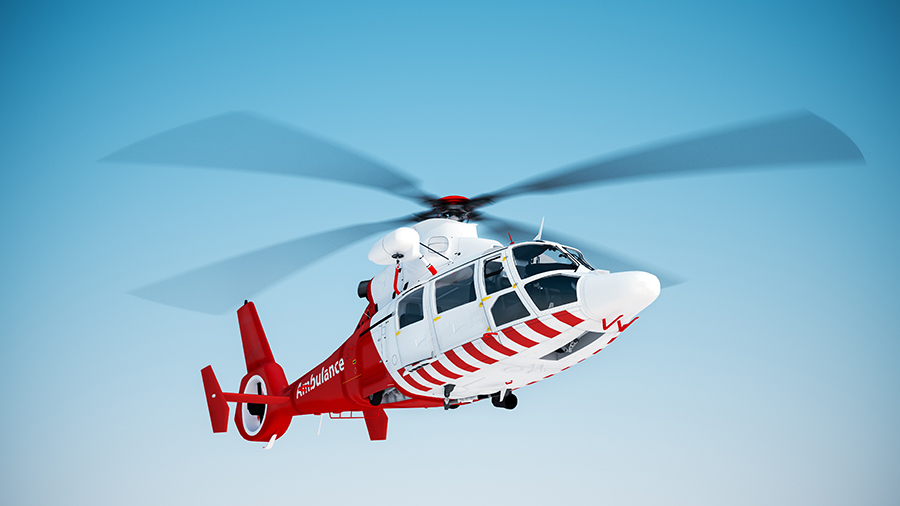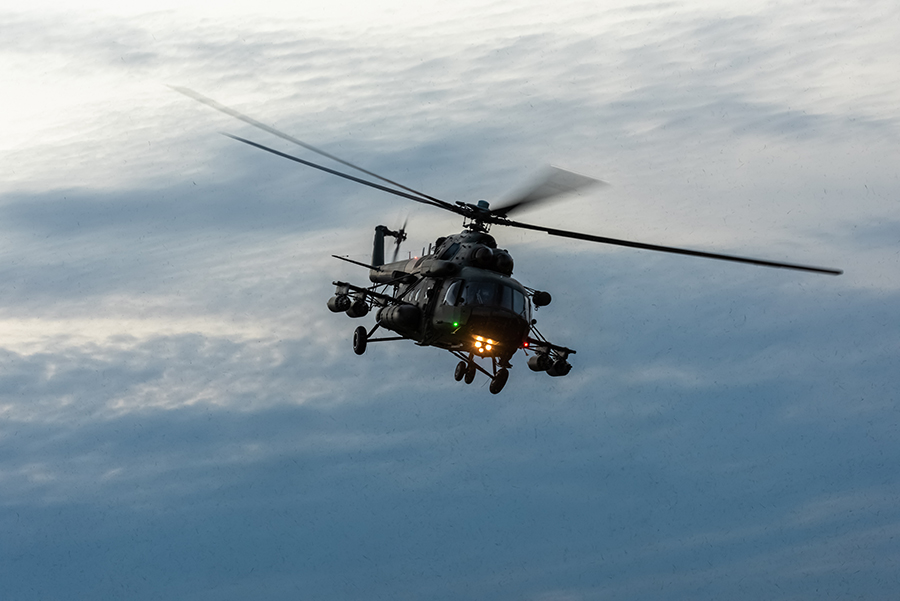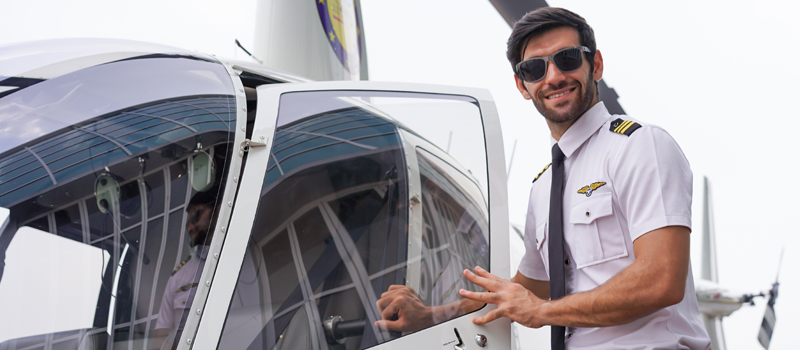Many people, including some fixed-wing pilots, are terrified of the mere idea of a helicopter engine failure. They know that it is possible to land if a plane engine fails, by putting the aircraft into a glide. But helicopters don’t have wings and therefore don’t glide, so they assume that helicopter engine failure always leads to a fatal crash. I have several times heard the following, or something like it: “Helicopters? You wouldn’t catch me in one of them. If the engine stops, you’ve had it – they just fall out of the sky.” Indeed, if I had a cent for every time I’ve heard this or something like it, I might not be rich but I’d probably be able to afford a lot more flying.
The myth – and it is indeed a myth – that helicopters drop like a stone if the engine quits is quite widespread, and has been perpetuated in books and films. In fact, a book by a well-known thriller writer was spoiled for me by the description of a helicopter plunging out of control into the trees below after the engine had failed. It was such a pity – the story would have been much more convincing, and far more exciting, had the pilot executed a perfect engine-off landing into a tiny clearing in the forest. For, in reality, this is exactly what he would have done, and probably carried out successfully.
So what can you do if you are flying and a helicopter engine fails? How can you perform a helicopter engine-off landing or ‘autorotation’, as it is generally known?
What Is Autorotation And How is It Performed?
In a helicopter, the turning of the rotors keeps the machine flying, so what we call rotor RPM (which stands for revolutions per minute) is crucial. Now, normally the helicopter engine keeps the rotors turning. The rotors are like rotating wings, and they produce lift, which keeps the helicopter in the air.
If the helicopter engine fails and nothing is done, the rotors will stop. So we need something else to prevent the decay of the rotor RPM, and we need it quickly. So long as we can restore the rotor RPM, the helicopter will keep flying – it will not fall out of the sky and crash.
So, as soon as there is any indication whatsoever of reducing rotor RPM – and there is usually a warning light and horn – the helicopter is put into a steep descent by immediately lowering the collective as far as possible. Once the helicopter starts to descend, air from below comes up through the rotors and keeps them turning, in a somewhat similar way to a windmill or a sycamore leaf. The helicopter is now established in what is known as ‘autorotation’. It will descend quite quickly, typically at around 1700 feet per minute. But it will be coming down under control. The pilot can choose where to go, decide to speed up or slow down, turn into the wind and select a safe landing site.
At a height of about 40 feet, the pilot starts a gentle flare to arrest the rate of descent. The helicopter is then leveled at about five to ten feet, and at the last moment, the collective is raised to cushion the landing. If this is done correctly, the helicopter will land gently, possibly with a short run-on as it touches the ground.
This description of a helicopter autorotation makes it sound quite easy. In fact, it is really not all that difficult. You do not feel as though the helicopter is falling out of the sky. Students learning autorotations do not finish each lesson staggering and looking a bit green. In fact, at the school where I instruct, I frequently surprise trial lesson students by finishing with a practice autorotation to the airfield, and not telling them until afterward. Many do not even realize that anything out of the ordinary has occurred. But as with engine-off landings in any aircraft – or indeed almost any flight maneuver – autorotations take practice, and there are a number of factors to take into account. So let us now look at how students learn to do autorotations, and what exactly is required to perform one successfully.
Lowering The Collective Quickly Is Crucial
When a helicopter engine fails, the most important thing is to get the collective down and to do so quickly. Rotor RPM is absolutely critical! Once the RPM has dropped below a certain level, it will be impossible to get it back, and the helicopter will indeed crash and burn.
The amount of time you have to lower the collective after a helicopter engine fails varies, depending on the type of helicopter. Larger helicopters with heavier rotor systems have more inertia in the blades and give you significantly more time. A pilot once told me that in a Bell JetRanger you could sit there and say: “Oh dear, we’ve had an engine failure”, and then lower the collective at a leisurely pace. Now, this is a bit of an exaggeration, but it is true that there are definitely quite a few seconds of thinking time. But this is not the case in smaller, lighter helicopters, such as the Robinson R22. In these helicopters, the collective needs to be lowered immediately. It is probably this fact that has led to their undeserved reputation as being dangerous, especially for low-hours helicopter pilots.
Other Ways To Raise The Rotor RPM
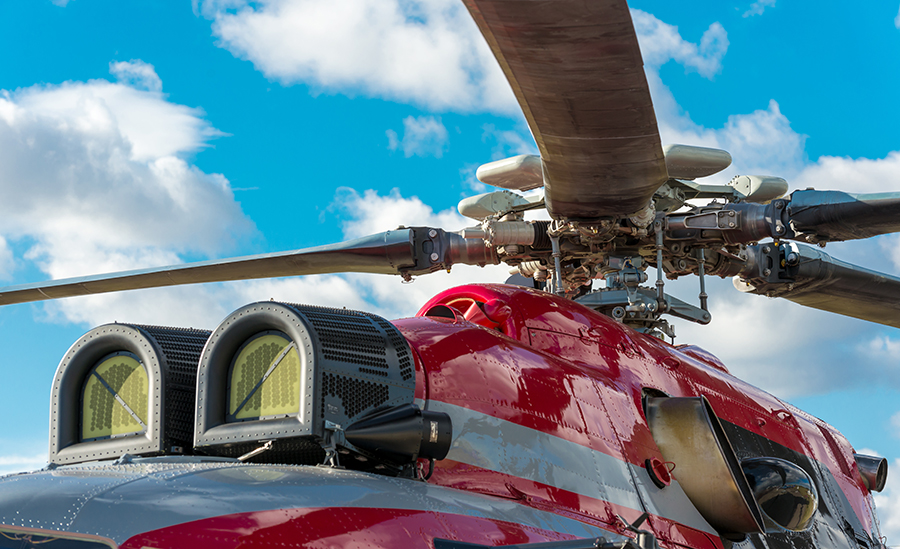
However, if required, there are other ways to raise the rotor RPM. Increased disc loading will do so, and one way to increase the disc loading is to flare the aircraft. Tests have shown that in the R22 if you lower the collective and flare at the same time, you have around seven seconds to react, rather than the two seconds or less sometimes quoted if you just lower the collective. To be sure, this is not a great deal of time, but try counting up to seven slowly….it should be enough. Remember, all you have to do is lower the collective – everything else can wait.
So you’ve had an engine failure. You’ve lowered the collective and flared to get your rotor RPM back. You’ve put in lots of right pedal to stop the sudden yaw to the left – the most obvious sign of a real engine failure. What now?
Looking For A Landing Site
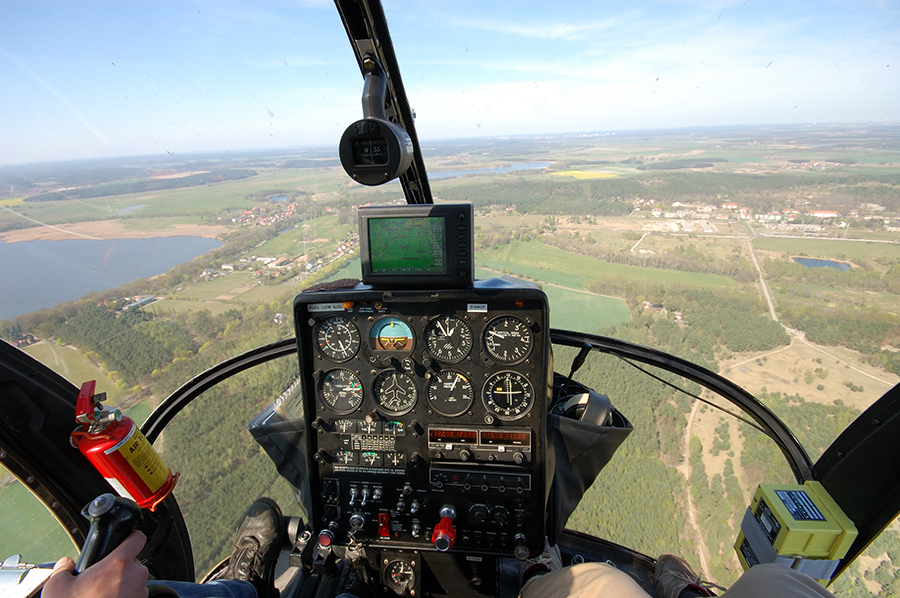
As in any other aircraft, when a helicopter engine fails, you need to look for a landing site. What sort of landing site? Well, anything will do really, as long as it is flat and large enough to take the helicopter skids. If you happen to be over the center of a city, a flat roof will do just fine, though it doesn’t give you much room for mistakes. This is the main reason why I would rather have a real engine failure in a helicopter than an airplane – you don’t need a large field in which to land. If one were available I would certainly use it, as it allows more margin for error, but it is not necessary. Something much smaller would be absolutely fine – a large garden, a clearing in a wood, a playing field. Any of these would present no problem to a helicopter in trouble.
Preparing To Land
So you’ve selected the landing site for your helicopter As in a fixed-wing aircraft, you need to land into the wind, so you may need to turn, which is quite possible while in autorotation. Then you need to position yourself to actually get into your chosen landing site.
As in a fixed-wing aircraft that has experienced engine failure, it is quite easy to lose height, but difficult to stretch the ‘glide’. This can be done a small amount by raising the collective slightly and increasing the speed. However, the maneuver takes nerve and accuracy, and you won’t cover very much more ground, so it is preferable to pick a landing site that is perhaps a little too close. You can then do S-turns to lose height if you wish, though personally, I prefer to adjust the speed. Helicopters don’t stall at low airspeed, so you can slow down – even to almost zero airspeed, if necessary. If you do this, the rate of descent will increase until it is almost off the clock! You will come down nearly vertically – in fact, with any headwind at all you’ll go backward. But it is one way of landing on a site that is directly beneath you, if that is the only one available, and in my opinion, it is a far easier and safer method than starting to turn and maybe losing your site in the process.
If there is time before the actual landing, you should put out a Mayday call, and brief your passengers. But you’re coming down quite fast, so in reality, there won’t be all the time in the world, to say the least. Your Mayday call will probably be somewhat abbreviated, and anything fancy like an attempted re-start had better is forgotten…unless you started from around 10,000 feet.
The Engine-Off Landing
If you’ve slowed the helicopter down in order to reach your site, you have to ensure that you pick up airspeed again, as you need to be at about sixty-five knots before landing, preferably by 300 feet above the ground. At this point, you aim for the middle of your chosen site, and at around forty feet you start a gentle flare, level the helicopter, and raise the collective as you reach the ground, in order to cushion the actual landing. And hopefully, you then walk away, with no damage to either the helicopter or the pilot and passengers
The most difficult part of the whole autorotation exercise is the flare and landing. The amount you need to flare depends on the wind, and each autorotation is slightly different. It takes recent practice to get it right, and that is something not all pilots will have. However, as long as you get the collective down, make an approach under control to a flat area, and touch down vertically, your landing should be survivable. Helicopters are designed to land on their skids and to withstand quite a lot of force when doing so. The skids and seats will collapse in the event of a heavy landing, protecting the occupants. This is one reason for not putting anything hard or sharp under the seats in helicopters where this is the only storage space, particularly spare controls or oilcans! You really don’t want to sit on them in the event of an imperfect forced landing! But to keep to the point, as long as you land vertically you should be able to walk away…and helicopters are replaceable.
Engine Failure In The Hover
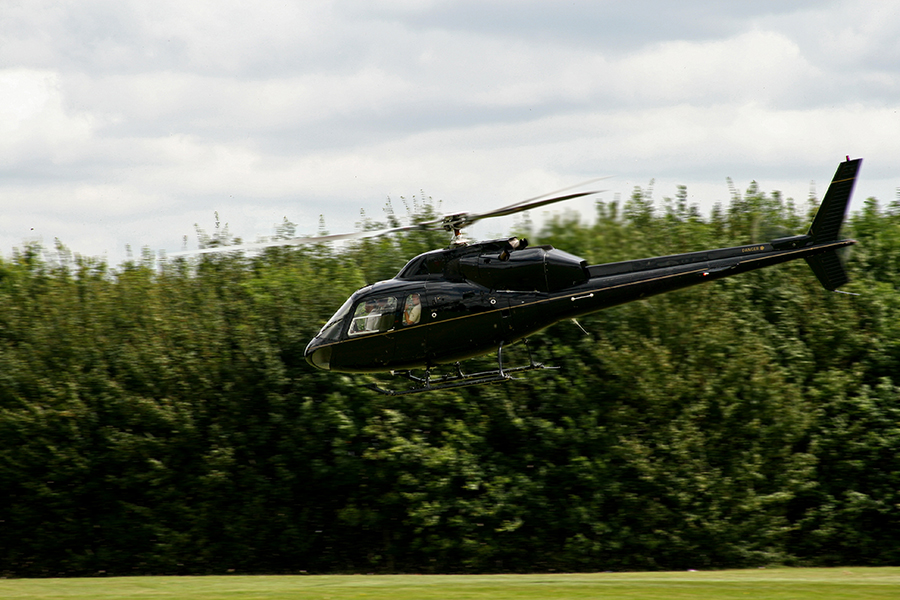
Engine failures are also possible when hovering or hover-taxying. In this situation, the last thing you would want to do is lower the collective, as you would simply plunge into the ground. Instead, the pilot keeps the aircraft level, then gently raises the collective at the last moment. From a five-foot hover you hardly need to raise it at all, but simply hold your position. This is one reason why helicopters rarely hover any higher than that.
And Some Final Words…
Helicopter engine failures are, thankfully, very rare. However, a sensible pilot always flies cautiously, bearing in mind the possibility. I was taught never to fly at a low level over a large area of woodland if it was possible to go around it. And while flying at 500 feet may be fun, it doesn’t give you a lot of time in an emergency.
The normal helicopter take-off profile is designed to enable the pilot to land safely at any time, should the engine fail. Each helicopter type has a height-velocity diagram, also known as the ‘avoid curve’ – or more graphically as the ‘dead man’s curve’. This graph plots airspeed against height and shows the areas from which it would be extremely difficult to perform a successful engine-off landing. Basically, the unsafe areas are those in which the helicopter is high but slow, or very low and very fast. This is why, if at all possible, helicopters will pick up speed close to the ground, then climb away when they have enough airspeed. Vertical or towering take-offs look good and are fun to do, but should only be used when absolutely necessary – when the choice is between being in the avoid curve or perhaps being in the trees or some other obstacles.
When you are reasonably current as a helicopter pilot, practicing autorotations are great fun. I remember an instructor saying to me that he would happily do them all day, and I’m just beginning to feel that way myself. Thankfully, I’ve never yet had a real engine failure, but if I fly long enough, the chances are that someday it will happen. If and when it does, all the practice will, hopefully, stand me in good stead – and not only will I walk away but I’ll be able to use the helicopter again afterward!

